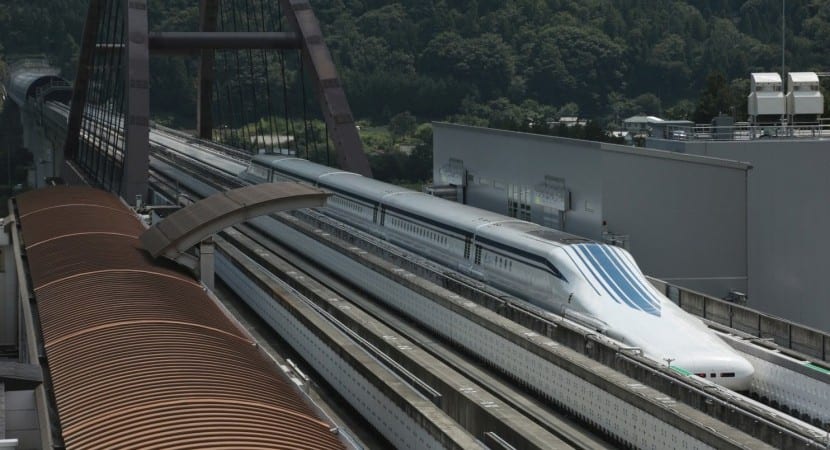
Undoubtedly the Japanese maglev is very topical, a train that has been able to circulate for more than ten seconds to speed over 600 km / h. Because of this and although this technology is not new, if that returns to be topical precisely due to its peculiarities and recently harvested milestones. With this in mind, it is not surprising that many of us have questions about how it works, if it is dangerous or if there are directly faster means of transport.
Going into a little more detail, a maglev is basically a train that runs on a rail with certain magnetic and quantum properties that make it levitate on it. In colloquial language what we have in basically a train floating above groundSomething that helps, as surely you will be imagining that the friction that normally exists between the wheels of the train and the tracks is reduced as much as possible, so there would be no limits to reach high speeds.
If you want some much clearer and more graphic examples, we have to talk about a high-speed train that catches us very close and that, in addition, is in full swing, the eTA Spanish. Without getting into too much controversy about its implementation and funds, tell you that this transport system is capable of circulating at speeds of up to 305 km/h, speed that seems slow compared to 450 km/h to which it usually works practically during the chinese maglev, as you can see today there are several in operation.
Taking into account the entry that brings us together today, tell you that the Japanese line that has broken the current record has placed it in the 603 km/h. According to its creators, apparently this speed still it could be increased as long as its journey is lengthened since, at the moment, it is still too small. Considering the Japanese taste for high-speed trains, this will happen much sooner than we imagine. As a detail, there are already proposals to extend the stretch of track throughout the country.
Really ... how does a maglev work?
Attending for a moment to the theoretical basis that supports the operation of the maglev, tell you that everything is due to the creation of a strong magnetic field created by superconducting magnets, we are talking about very high figures, as much as 100.000 times more powerful at field generated by the earth itself. By way of detail, tell you that although extremely powerful, this magnetic field only affects the lift of the vehicle and the rails, which are the ones that truly drive and control the speed, direction and levitation of the train.
Thanks to all this technology, a train is achieved that literally floats about 10 centimeters above the tracks and, precisely thanks to the attraction and repulsion actions of the magnetic fields, something very similar to when we try to join two magnets, the train is controlled to go in one direction or another. As you can see on the screen, a detail to take into account is precisely the aerodynamics that the train has to support since not all vehicles can circulate at speeds greater than 600 km / h. By way of detail, it is estimated that maglevs, using a vacuum tube, could circulate at speeds of 6.440 km / h although all this is a more theoretical than practical question.
https://www.youtube.com/watch?v=FNleI1eHzi0
Is a maglev safe? Are there faster means of transportation?
In terms of safety, tell you that according to the designers, apparently and when the speed at which the maglev circulates is higher as well its stability grows, something that makes it one of the safest means of transport in the world. With this in mind and the speeds at which they are able to circulate, it is not surprising that in Japan they are already trying to implement means for their implementation such as long-distance trains, once the entire project is underway it is intended that the maglev can compete with airplanes.
At the moment maglev are among the fastest means of transport that there are today on earth, a fact that serves to qualify them, not without first taking into account that they have not yet reached their maximum speed, only maglevs in vacuum tubes could be faster than the current ones although these have not yet been implemented so we are only talking about theory without proof.